Have you ever wondered why, when we repot houseplants or transplants, we only go up one or two pot sizes? Doesn't this feel like a waste of time? Won't our plants just grow bigger and better if we give them a pot that is “too big”?
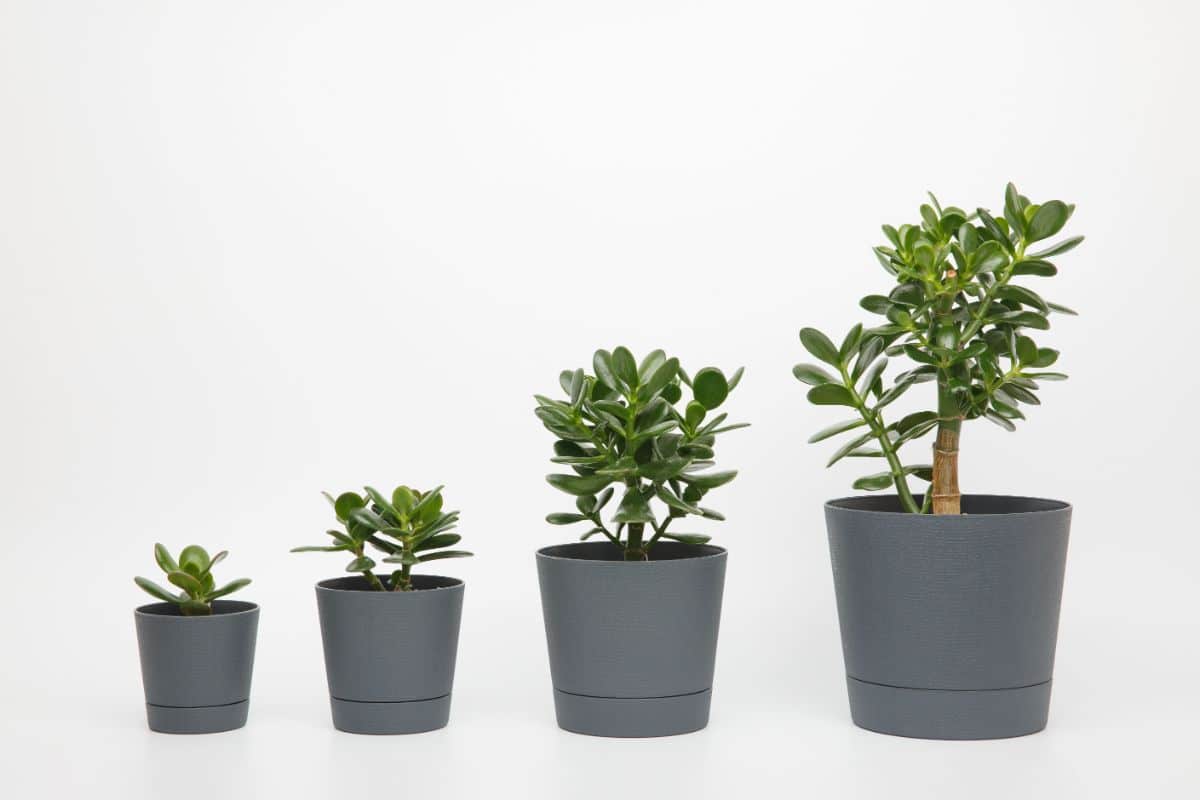
Well, no. Potting small plants in big pots doesn’t do them any good. But it does do them harm. Potentially quite a bit of harm.
Jump to:
One Really Important Reason Why You Should Pot Up in Graduated Pot Sizes
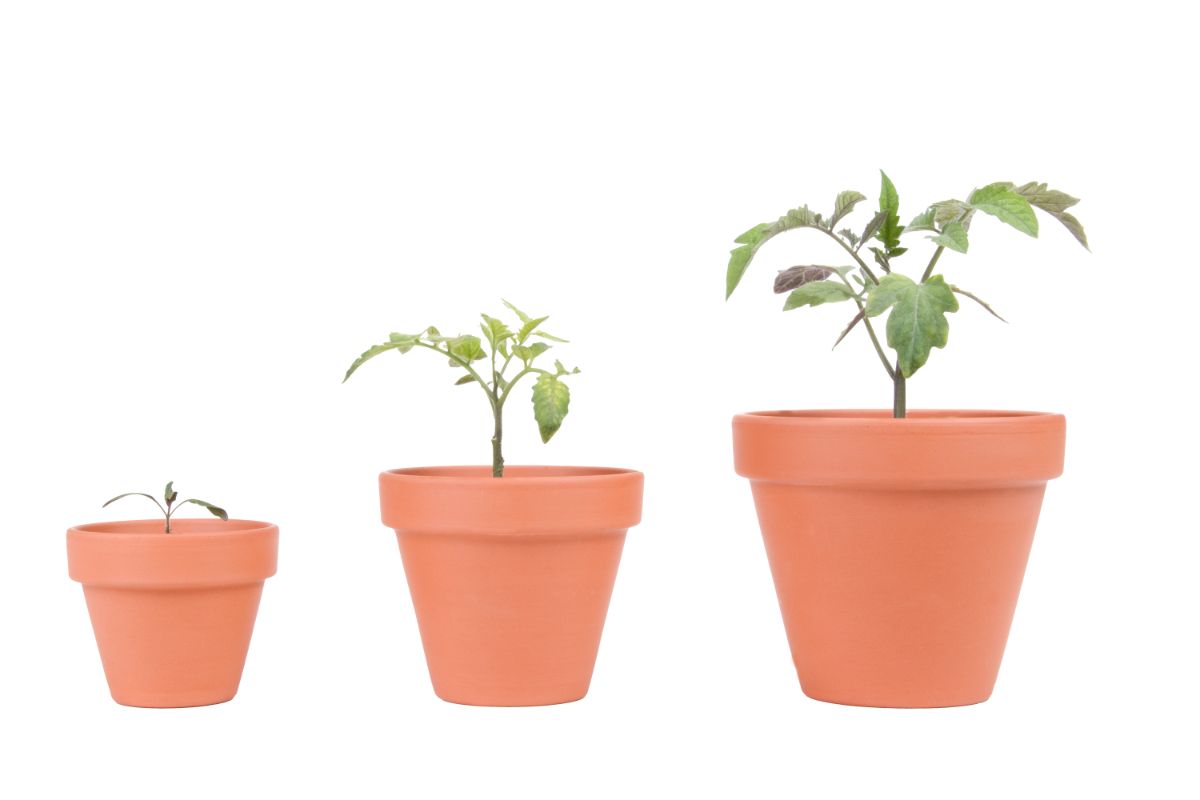
The biggest and most important reason to only move up one pot size when you repot a plant is watering. When a pot has too much soil, it holds more water than the plant can take up, and that leaves the soil too moist.
This leads to root rot and fungal disease. It's especially bad for plants that like their roots to dry out or nearly dry out between waterings.
This rule holds true pretty much across the board. It doesn’t matter if you are up-potting garden seedlings for transplanting or if you are repotting a houseplant that has outgrown its pot. You should always go up in size gradually to protect the health and well-being of your plants.
What’s the Right Next-Size Pot for Repotting Houseplants and Transplants?
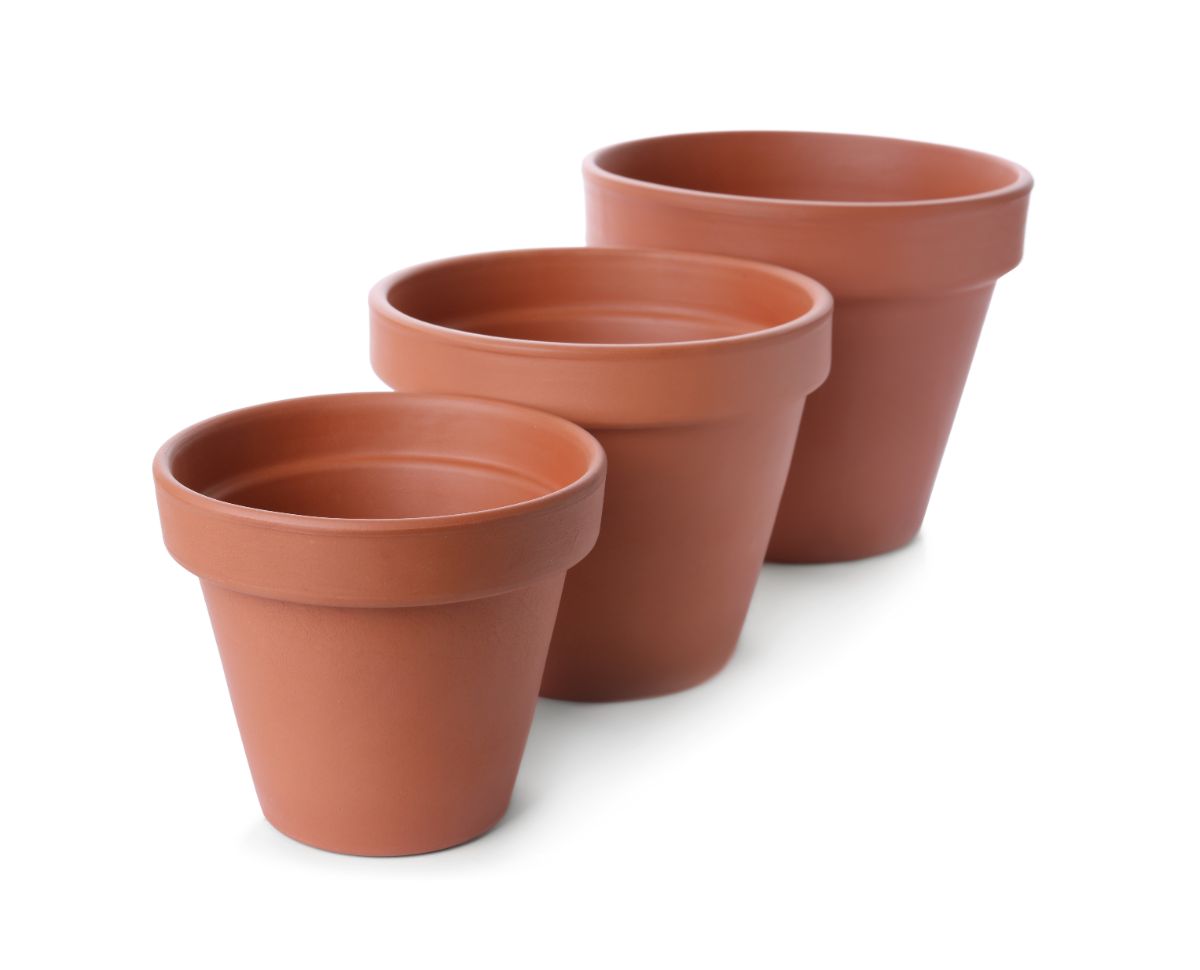
The goal is to not have plants with smaller root systems sitting in too much soil that will hold too much water. To avoid this, move up one pot size at a time. What is one pot size?
For houseplants, it is recommended that your next pot be two inches bigger than the pot the plant is currently in. If your plant is in a six-inch diameter pot, move up to a pot that is eight inches in diameter.
For seedlings and transplants, you should go up one pot or cell size at a time (which, as it turns out, is usually somewhere around one-and-a-half to two inches); so, two inches is a good “potting up” size all around. Start with a two-inch pot or cell pack when you prick out and pot up the first time. If you pot up again before you plant your plants in the ground, next time, move up to a four-inch pot. Continue this way until your garden plants are either in the ground or in a large container for this season’s container garden.
If you are working to create a full planter like a window box or hanger, there is a bit of an exception to this rule. You can plant small starts in a larger container for container gardening, but you should still follow the rule of two inches more space per plant. This will do two things: it will limit the soil-to-plant/root ratio to avoid overwatering and disease, and it will give your pot enough plants to eventually fill it for a full and lush look. For example, if you want a full-flowered hanging plant, plant four seedlings in an eight-inch pot.
Measuring Pots for Repotting and Potting Up
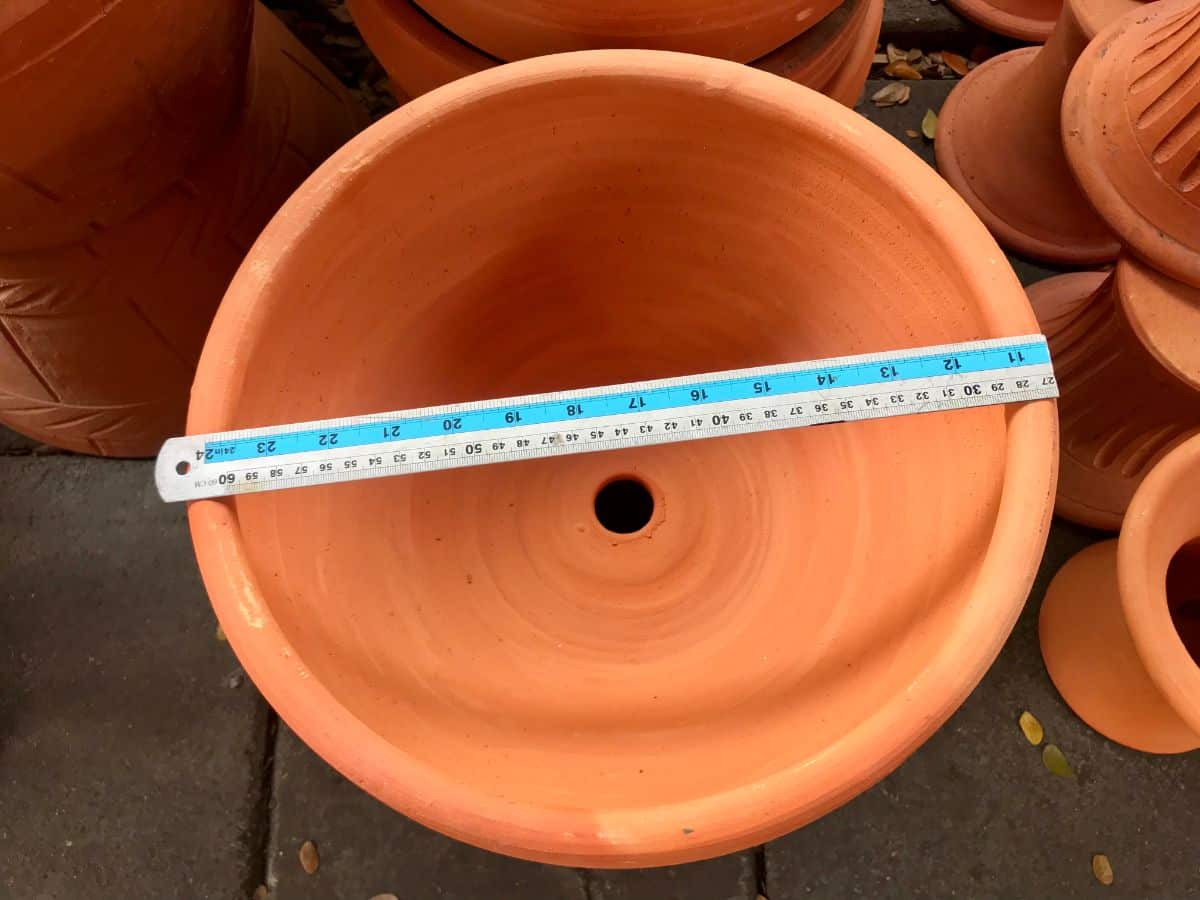
If you’re not sure what size pot your plant is in or what size pot you have, there’s a simple way to measure. Just measure across the middle of the pot from inside lip to inside lip.
Don’t measure from the outside of the lip because pots have different size lips and edges. Some decorative planters might have a lip that is an inch wide or more. The measurement that matters is the area that can hold soil, and that is taken from the inside.
Other Reasons to Pot Up Gradually

There are some other reasons to pot up gradually into pots of graduating sizes. These apply mostly to houseplants, but these reasons hold true for temporary garden transplants, too, and even more true for container gardens.
Looks Matter
You will get a better look when plants more closely match their pot size. This is especially true for houseplants and decorative outdoor plants.
Small plants in big pots with lots of soil showing just don’t look very nice. The aesthetic is ruined. What should look lush and full ends up looking sad, small, and stunted—even if it’s not. The focus becomes the brown soil and pot and not the plant. Obviously, this is not your goal.
More Stable
A better fit means your plant will be better rooted in more of the pot and soil, which means it is more stable in the pot. There won’t be a lot of extra loose soil for the plant to flop around in. Your plant is less likely to lift or lean in the right-sized pot.
Stability is also a reason to pot up a large plant that is in too small a container. You need a pot large enough and heavy enough to anchor the plant. If the plant is too top-heavy, it will easily fall over.
Better Blooms
A lot of flowering houseplants need to be a little root bound in order to blossom. If they have too much space in the pot, there's a good chance they won’t bloom, and you might wait years to enjoy their flowers.
The reason for this is that these plants will put growth to the roots and foliage as long as there is room to do so. Being a bit pot-bound slows root development and triggers the plant to move into blossoming instead. Examples of plants that like to be crowded before they blossom are Christmas cactus (or any related Holiday cactus) and Peace lilies.
Size Control
Pot size can also act as a growth limiter and can help you control the size of the plants you keep. When you don’t want plants to get too big or too heavy, you can manage that by being selective with the pot size you choose. There may come a time when you decide that your plant is simply big enough; anything larger would take up too much space.
When this is the case, you have some options. You can repot into a barely larger pot, or you can “repot” back into the same pot with fresh potting soil. To keep the plant lively, you can prune back the roots and/or trim the top of the plant to give it more room to grow without letting it take over your whole life and home.
Save Plants, Not Time

Though it’s tempting to skip ahead and save time by repotting plants into larger-than-necessary pots, it’s not a good idea. Pots and plant containers have limited abilities to drain away extra water, so moving plants into big pots before they are ready for them only results in fungus, mold, rot, and disease. Plant care and management will be much easier if you follow this one simple guideline.
For the happiest, healthiest, strongest plants, it’s worth taking a little extra time to do the job right; and for plants, that means choosing and using the right containers for the stage of growth your plant is in.

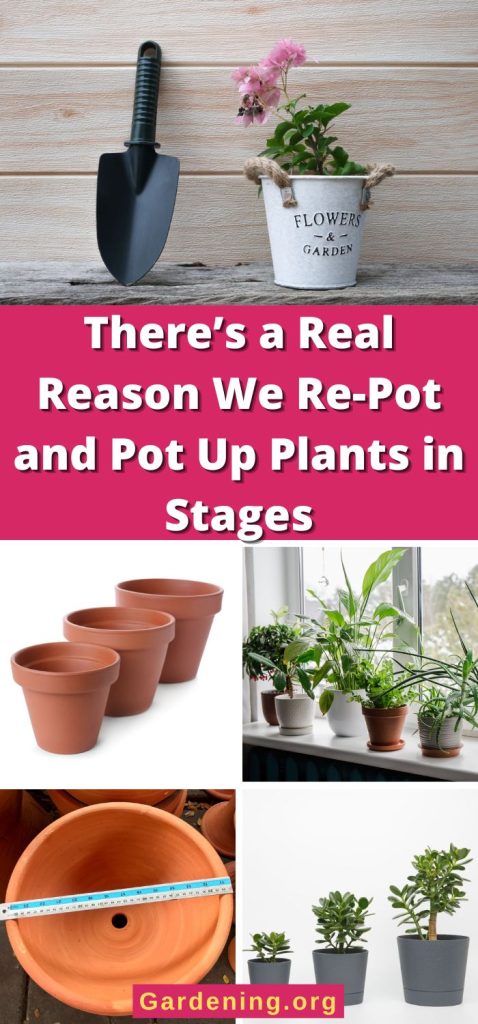
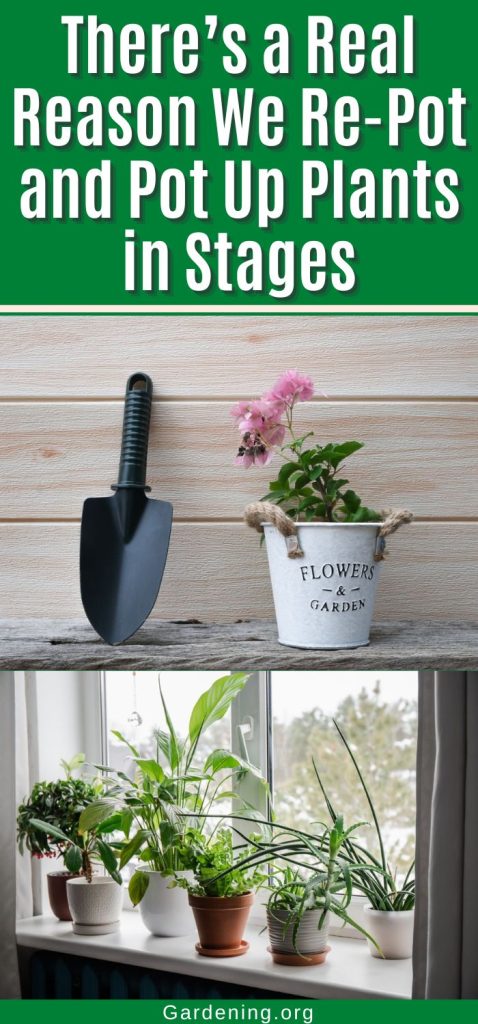
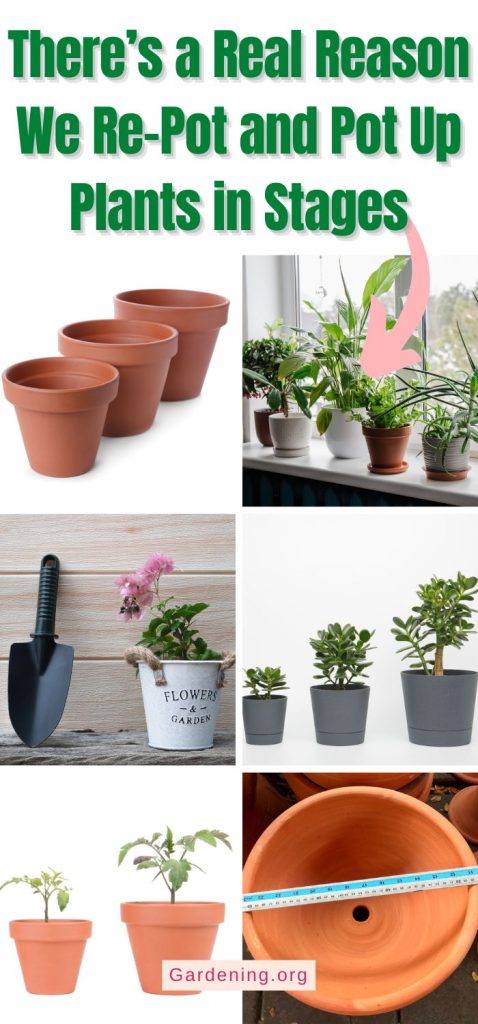
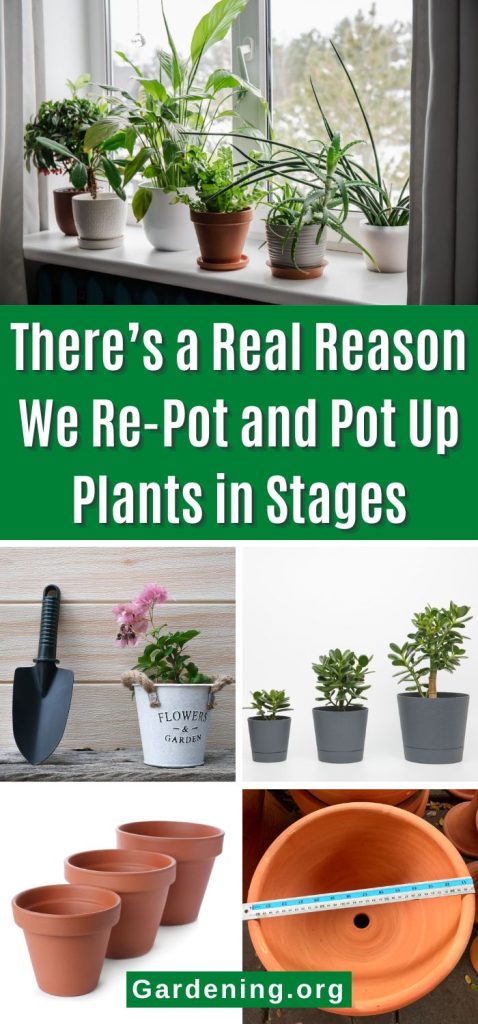




Susan Davis
I sent you an email asking "what is a stem" on an African Violet. My confusion is I thought there were two stems, one with leaves on it and one with the flowers on it. Apparently both the flowers and leaves are on one stem? My plants are new to me, very tiny pots of 2" I found in an Oregon coastal nursery and they were in full bloom, blooms now gone. I ask re: drooping "stems" as I have seen a few. Also, I need to repot these tinies into a 4 in pot following your pot sizing instructions. They grew FAST! So, what about the stem question or do I really already know stems include leaves AND flowers. Now I need to check out your instructions on doing the repotting. I have done this for years but not with African Violets. I like your site.
Mary Ward
Hello! I'm glad you like the site!
I think this article on repotting African Violets and dealing with stem issues might help you:
https://gardening.org/african-violet-stem-too-long/
Also, check out the growing guide for African violets here:
https://gardening.org/african-violets-full-growing-guide/
Erica
I don't understand the reason to limit the pot size. In nature, it rains. The plants can grow as wide or deep as they want, flower regularly, will not absorb all water from surrounding soil, and not be doomed to root rot. Why is a lot of soil so terrible for houseplants in a pot of we let the water dry out between watering?
Mary Ward
It's just that pots cannot drain excess moisture away the way the ground does. Growing plants in pots with too much soil that holds too much moisture is more comparable to growing in poorly draining soil where too much stays too puddled for too long a period of time close to the roots.
The point that's easy to miss (and it took me some time to wrap my head around this, too), is that water isn't just drained, it's USED. a small plant with too much water to use will sit in for too long. In the ground, water drains down, and roots stretch to find it. This is what grows long, strong roots. It's a disbursement and use issue more than anything. In pots, more water stays near the roots but it's more than it can use and nowhere for the excess to go until it is either used or evaporates. (Even drainage holes in pots can only overcome so much of this if the plant is small).